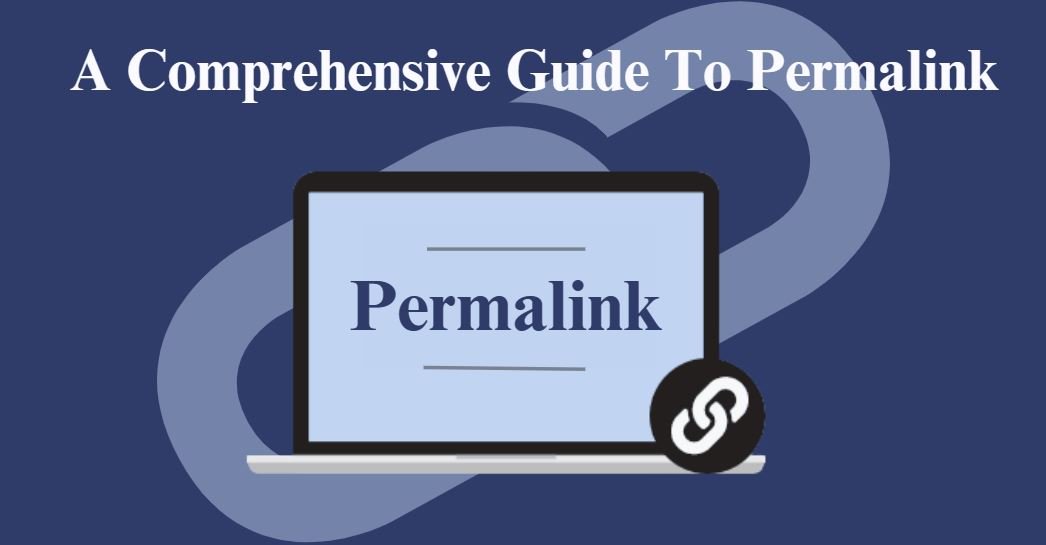How many famous SEO strategies have you tried to replicate?
I’ve tried quite a few, but have never been able to get the same great results as what the original authors led me to expect.
You might accuse me of not putting forth enough effort, but I put dozens of hours into implementing each strategy – it was not from a lack of effort.
I did everything that the leading SEO authorities said to do, and yet the best I could do was rank on the 2nd or 3rd page of results.

So today I want to share my case study of replicating a very well-known link building technique along with some of my thoughts of why “guru techniques” might not always work for you.
[twitter name=”name”]
[retweet]
[facebook]
My experiment building a “Skyscraper” …and falling from it
Like I said, I’ve tried many different white hat SEO techniques over the last few years, but this was the one that finally made me realize that something was seriously wrong.
skyscraper-technique-brian-deanIf you haven’t heard of the skyscraper technique, give it a quick skim. The basic idea is to pick popular pages, improve upon them, and then reach out to sites that linked to those lower-quality pages and get them to link to you.
It’s a great strategy, and it obviously works for some, so I decided to give it a go.
This was on a brand new site that I had high hopes for: RawResume.com (note that the site was sold in March of 2015, so it may have changed since then). This was a site dedicated to helping people improve their resume and find jobs.
Step 1: Pick a Keyword to Target
After a bit of digging, I decided to target keywords similar to “how to write a great resume.”
As you can see from the Term Explorer image below, the keyword group consisted of medium-competition search phrases and a decent overall search volume (~9,000/month).
term explorer writing a resume
Step 2: Create Better Content
I went through the first few pages of results in order to look at the quality of the competition’s content.
Overall, it was very poor.
Here was the page that was in first position at the time:
Rockport-Institute-guide
It’s a complete guide, but is basically wall of text after wall of text, and very few examples or actionable information at its core.
The second result was even worse from a content standpoint, just a short article from Business Insider:
BI-resume-guide
Could I make a better guide to writing a great resume? You better believe it!
After 20 hours of research, writing, and formatting, this was the result (You can see the full guide here):
my finished definitive guide
I can confidently say that this is the best (free) guide to writing a good resume online, by far.
When you create the highest quality content, it not only satisfies readers more, but it also makes other site owners more likely to agree to link to it.
Step 3: Get High Quality Links Through an Email Outreach Campaign
You’ve heard that one “high quality” link is better than a thousand “low quality” backlinks. I have no doubt this is true.
A high quality link consists of both authority and relevance. Authority in the sense that the page itself is trusted in the eyes of search engines, and relevance in the sense that it makes sense that the page would include a link to your page.
And that’s the beauty of this particular strategy. You only reach out to the most authoritative sites that are also relevant to your page. Essentially, you’re “stealing” your competitors’ best backlinks.
I made a list of similar guides and articles that were about how to write a great resume. All you need to do is compile the first few pages of Google search results, and you will find 90% of the most linked-to pages.
From there, take a look at each page’s backlinks by using a link analysis tool like Site Explorer by Ahrefs.
For example, I analyzed the backlinks for that Rockport Institute guide that was ranking #1 for most of the searches I was targeting :
rockport URL analysis
You’ll see that it has 385 backlinks. In my mind at the time, a few dozen really solid links, in addition to the better content, should have allowed me to overtake this page as the #1 result.
To get the links, I made a list of all of the pages that linked to the Rockport Institute guide that had a URL rating of greater than 5. (Please note that this cut-off was arbitrary; you could go lower if you wanted to expand your list of prospects.)
Once I had a decent number of prospects, it was simply a matter of sending an email telling them that I had a new and improved guide that would fit well on their page. I also pointed out any broken links on the page to improve my success rate. A good email outreach strategy is crucial here.
In total I sent 232 emails and obtained 15 links, for a 6.5% success rate. This is decent; some niches will be slightly worse, and some will be a bit better.
In addition, I also picked up a few more links from Reddit and other blogs that came across my guide naturally (learn about marketing on Reddit before you try it).
So this is what the page looks like today, which hasn’t changed much in the last few months:
current links and authority of guide
Overall, I was able to pick up some very high-quality backlinks:
backlink analysis resume guide
Step 4: Profit? (Wait for rankings)
So far, this looks like any great case study you might read on an SEO blog, but here’s where it changes.
I didn’t get the #1 spot…
I didn’t get top 3…
I didn’t even get to the first page…
Here were the rankings for a bit over the first 60 days (I started tracking a bit late):
resume guide rankings
As of now (over 6 months later) the rankings have not changed significantly.
There were periods where rankings have improved for a few days, but then they drop back down:
current guide rankings
I did everything right:
I targeted low-medium competition keywords
I created truly “epic” content
I was able to get great links from about 20 pages
I was very patient waiting for rankings to come
And yet, no results. A few visits a day from random long-tail search traffic, but nothing significant.
The Reason Why Your Rankings Never Improve as They “Should”
I’m not afraid of hard work, and I doubt that you are either.
But, we’re also not crazy. Why would we put in 20-30 hours creating a guide and sending emails if you don’t get the rankings that you should (based on the quality of your content)?
The reason that you’re not getting the rankings you work hard for is not because you’re doing something wrong or because Google hates you.
It’s because you’re not on the same playing field as the guys behind all those case studies you see.
Comparing My Results to Others Revealed Two Things…
I needed to get to the bottom of this.
There were 2 main things I learned and observed.
1. You Only See a Highlight Reel
It’s similar to how Facebook causes depression.
You see the best of everyone else. Their vacations, accomplishments, and other things in their life that they are proud of.
This can make you feel worse about your life.
But getting those good things (results) all the time is not normal. They are the exception.
No one posts updates saying, “I just ate a tub of ice cream, I hate my body.” They post the good stuff.
Blog owners do the exact same thing!
Guess which post would get more attention:
“I used the super awesome secret SEO technique, ranked #1, and get 20,000 visitors per month”
…or…
“I used the super awesome secret SEO technique, ranked third page, and get a few hundred visitors per month”
The first one, of course.
I’m not blaming blog owners, it would be silly to post every case study – good or bad – for many reasons.
But you need to keep this in mind: whatever case study you’re reading is the exception, not the norm.
skyscraper-technique-iceberg-illustration-case-study
If bloggers could post successful case study after case study, they would. The reason they post case studies rarely is because there aren’t that many.
I believe the difference in results comes down to 4 things:
quality of the execution of the strategy
niche and keyword factors (competition)
variance – not every swing will be a home run
your starting point (your site and resources available to you)
2. Your Starting Point is the Most Important
The quality of the execution is typically up to you for the most part.
The competitiveness of your chosen niche is out of your control past your initial starting point, as is variance in search algorithms.
What is in your control, and I think is the defining difference in most cases, is your starting point.
Brian Dean, best known for his extremely detailed guides and case studies at Backlinko shared that he was able to get a post to rank #4 for the fairly high competition term “backlinks” (this post if you’d like to take a look).
Do you think if you or I would have been able to rank so high if we had published the exact same post before Brian did?
Not a chance!
Most of us don’t have the traffic (way over 60,000 UVs per month now), nor do we have the domain authority.
Check out these stats for the Backlinko domain:
backlinko stats
A 65 domain rating is no joke.
Here’s how domain rating works: A domain with a high domain rating (authority) has a ton of high quality links pointing to it. As long as the site is set up reasonably (with internal links), some of that authority is automatically transferred to any new posts. This makes it much easier to rank any page.
Most SEOs massively underestimate the effect that domain authority has on your ability to rank.
I’m 100% guilty of it myself.
You think: “If I do everything else right, and get a few extra high quality backlinks, I’ll still be able to get great rankings.”
But it doesn’t work like that. Almost all people are absolutely terrible at estimating personal results. We make optimistic predictions and rationalize the failure later.
Those few extra backlinks won’t even come close to matching the power that hundreds or thousands of links pointing at other pages on the domain provide.
Let’s Look at Some Case Studies…
I don’t expect you to just take my word for it, although I suspect the realization is forming in the back of your head right now.
I’ve collected a few published case studies to analyze the results and their link profiles.
Note: Most are from Backlinko. I’m not picking on Brian, because I love the site and he does amazing work. There just aren’t too many other people out there willing to be open with case studies and provide links and full transparency.
Keyword Difficulty Ranking Referring
Domains
to Page URL Rating Domain Rating
My Resume Guide Medium 3rd page 22 17 45
Case Study 1 High 2 326 45 65
Case Study 2 Medium 1 85 37 60
Case Study 3 Very high 7 122 21 58
Case Study 4 Low 4 30 29 49
Note #2: Pages may have continued to get more links since the case study was published, they are likely stronger than when the results were first reported.
At first glance, there doesn’t seem to be a huge difference in domain ratings between the domains, but there is.
Domain rating is based on a logarithmic scale, which means that it is 10 times harder to go from 55 to 65, than it is to go from 45 to 55.
At these ratings, every single point is highly significant.
My page had the lowest URL and domain rating; no surprise it had trouble ranking.
What stands out to me is case study #4. Even though the URL rating is decent, and it’s a very easy keyword, he still couldn’t crack ranking 4th. This is due to having a decent, but not great domain rating.
The other 3 case studies went after more competitive keywords. Despite having obviously lower quality links (look at the URL rating), case study #3 was able to rank pretty high for a very competitive keyword based on its domain rating.
The Solution for You and Me
Very few case strategies are published with a new (or relatively new) site in mind. Because they aren’t impressive.
If you’re starting from scratch, it’s clear that you can’t expect to have even a fraction of the results you read about on blogs right away.
While this might sound discouraging at first, I don’t think it has to be.
Instead of spending 30 hours on a piece of great content and promoting it, and feeling down when you don’t get the same results you read about, you now know that it’s not your fault.
So what is the solution? One word: consistency.
You need to get domain authority in order to achieve the results you read about, and the only way to do that is to consistently apply effective SEO strategies.
Here’s a great case study about going from 0 to 100,000 visitors…after 9 months.
Whether it’s the Skyscraper Technique or a different strategy, it takes time to build a strong domain rating.
article by https://ahrefs.com/blog/skyscraper-technique/
Note = We accept paid guest post , please let me know if you are interested. More details Sales @ medhaavi.net
http://ishanmishra.in/write-for-us-and-contribute-a-guest-post-for-our-growth-hacking-growth-marketing/

















